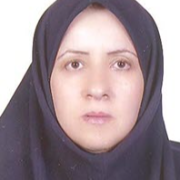Abstract
Background:
Atrazine is used extensively in many parts of the world for controlling a variety of weeds, primarily in the production of corn. Its widespread use in water has caused environmental concern because of its frequent detection in aquatic systems where this herbicide has been spilled.Objectives:
The purpose of this study was to focus on evaluating the feasibility of using titanium catalyst doped with iron (Fe+3-TiO2) to remove atrazine from the aqueous phase and to determine its removal efficiency in ideal conditions.Materials and Methods:
The influence of different parameters was considered. Three different levels of pH (3 - 11), initial concentration of atrazine at three different levels (0.1 - 10 mg/L), and reaction time at five different levels (0 - 120 minutes) in the removal of atrazine in an aqueous-phase titanium catalyst doped with iron (Fe+3-TiO2) at three different levels (0 - 25) were investigated. Finally, the data were analyzed using SPSS software (version 16).Results:
The results demonstrated that the atrazine removal rate increased by decreasing the initial atrazine concentration and the maximum rate of atrazine removal (41.72%) was at pH = 11, atrazine concentration = 0.1 mg/L, and catalyst concentration = 25 at 120 minutes.Conclusions:
According to the results, it can be concluded that the titanium catalyst doped with iron (Fe+3-TiO2) processes is an appropriate method for reducing atrazine in polluted water resources.Keywords
Full Text
Full text is available in PDF
